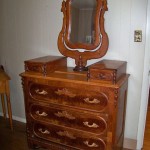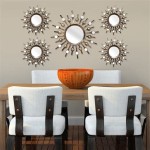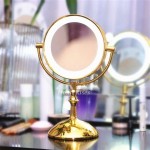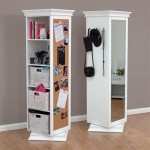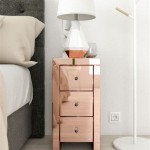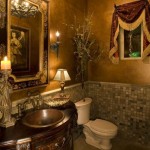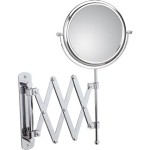Best Paint for Mirrors: A Comprehensive Guide
Decorating or repurposing mirrors often involves painting, whether for aesthetic modifications or creating special effects. However, ordinary paints don't adhere well to the smooth, non-porous surface of mirrors. Choosing the right paint type is crucial for achieving a durable and visually appealing finish. This article explores the best paint options for mirrors, considering factors such as durability, opacity, and application techniques.
Essential Considerations When Choosing Mirror Paint
Several key factors should inform the paint selection process for mirror projects:
* **Adhesion:** The paint must bond effectively with the glass surface to prevent chipping or peeling. Specialized primers and paints designed for glass are essential for achieving optimal adhesion. * **Opacity:** The desired level of opacity will depend on the project's goal. If complete coverage is needed, opaque paints are preferred. For translucent or frosted effects, specialty glass paints offer greater flexibility. * **Durability:** Mirrors in high-traffic areas or exposed to moisture require durable, scratch-resistant paint. Look for paints specifically formulated to withstand wear and tear. * **Finish:** The desired aesthetic plays a role in paint selection. Options range from glossy to matte finishes, each offering a distinct visual appeal. * **Application Method:** Different paint types lend themselves to various application methods, including brushing, spraying, and sponging. Consider the project's complexity and desired finish when selecting the appropriate application method.Types of Paint Suitable for Mirrors
Various paint types offer suitable solutions for painting mirrors, depending on specific project requirements:
Specialty Glass Paints
These paints are specifically formulated to adhere to glass surfaces. They come in various colors and finishes, including frosted, stained glass, and opaque options. Specialty glass paints typically require curing, either by air drying or baking in an oven, to enhance durability.
Acrylic Enamel Paints
Acrylic enamel paints provide a durable and glossy finish suitable for mirrors. These paints are available in a wide array of colors and offer good adhesion to glass when applied correctly. Proper surface preparation, including cleaning and priming, is crucial for successful application.
Chalkboard Paint
Chalkboard paint can transform a mirror into a functional writing surface. While not ideal for intricate designs, chalkboard paint provides a unique and customizable option for mirrors intended for practical use. It’s important to note that chalkboard paint will completely obscure the mirror's reflective surface.
Lacquer-Based Paints
Lacquer paints create a hard, durable finish with a high sheen. These paints are suitable for mirrors requiring a resilient and glossy surface. However, lacquer paints require careful handling due to their strong fumes and flammable nature. Proper ventilation is paramount when using lacquer-based paints.
Preparing the Mirror for Painting
Proper surface preparation is crucial for achieving a professional and long-lasting finish:
* **Cleaning:** Thoroughly clean the mirror's surface with a glass cleaner to remove any dust, fingerprints, or grease. A clean surface ensures optimal paint adhesion. * **Priming:** Applying a specialized primer designed for glass significantly improves paint adhesion. Primers create a suitable bonding surface between the glass and the chosen paint. * **Taping:** Use painter's tape to protect areas of the mirror that should not be painted. This is particularly important for creating designs or preserving sections of the reflective surface.Application Techniques
Different paint types require specific application techniques:
* **Brushing:** For intricate designs or smaller areas, brush application provides greater control and precision. Use high-quality brushes specifically designed for the chosen paint type. * **Spraying:** Spray painting offers a smooth, even finish, particularly for larger mirror surfaces. Multiple thin coats are preferable to a single thick coat, minimizing the risk of drips or runs. * **Sponging:** Sponging creates a textured effect, adding depth and visual interest. This technique works well with specialty glass paints and can be used to create a variety of decorative patterns.Tips for Successful Mirror Painting
Consider these tips for achieving optimal results:
* **Thin Coats:** Applying multiple thin coats of paint is generally recommended, regardless of the chosen paint type. Thin coats dry more evenly and reduce the risk of cracking or peeling. * **Drying Time:** Allow adequate drying time between coats and before handling the painted mirror. Refer to the manufacturer's instructions for specific drying times. * **Ventilation:** Ensure proper ventilation when working with paints, especially those with strong odors or fumes. Adequate ventilation protects against inhaling potentially harmful vapors. * **Practice:** For intricate designs or complex techniques, practicing on a separate piece of glass can help refine the approach and prevent errors on the final project.
How To Paint A Mirror Frame Gold Easily In Two Steps

12 Techniques To Painting Antique Mirrors Hallstrom Home

12 Techniques To Painting Antique Mirrors Hallstrom Home

Painting A Mirror Frame Easy Yet Stunning Ideas Girl In The Garage

How To Paint Gold Mirror Frame Keeping The Ornate Features Vickymyerscreations

How To Paint A Mirror Frame Gold Easily In Two Steps

How To Paint A Mirror Frame Gold Remodelando La Casa

How To Paint A Mirror Frame

Painting On Mirrors An Easy Step By Guide

How To Paint A Mirror Frame We Moved Visit Ashleyburk Com

